Research on coastal resilience, fisheries, and emerging contaminants receives NH Sea Grant funding
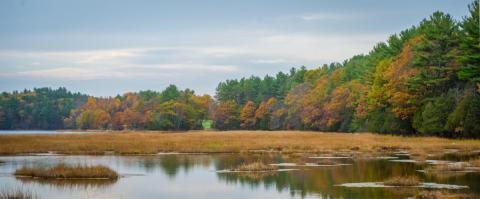
New Hampshire Sea Grant is kicking off the decade with five new research projects focusing on expanding our understanding of New Hampshire’s marine environment, building resilient coastal communities and economies, promoting healthy coastal ecosystems, and improving environmental literacy. Funded for two-years, the 2020-2021 research projects will be led by scientists from New Hampshire institutions and will incorporate outreach and education efforts as critical components of their plans. The projects represent a research investment of over $1.4 million from the National Oceanic and Atmospheric Administration and other non-federal matching funds.
Read below to learn about each project and what they mean for New Hampshire.
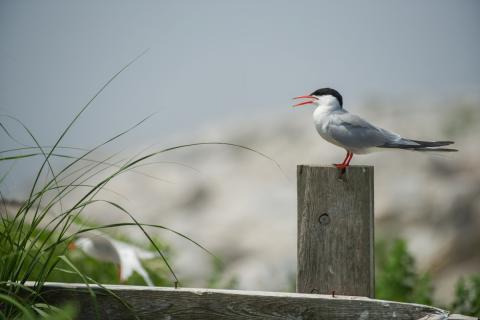
SEABIRDS AS INDICATORS OF NEW HAMPSHIRE’S FISHERIES
Elizabeth Craig (Shoals Marine Laboratory)
Having accurate data about fish populations is vital to managing a fishery, but getting that data for younger, smaller fish using traditional sampling methods can be difficult. A research team led by Elizabeth Craig at the Shoals Marine Laboratory and the University of New Hampshire will be studying the diets of seabirds – specifically terns in the Isles of Shoals – to close this data gap and more accurately measure the health of specific fisheries. By watching what kinds of fish seabird parents feed to their chicks, analyzing fecal samples, and sampling the fish community through net tows and DNA in seawater samples, the project will inform the ways we monitor our fisheries and make management decisions.
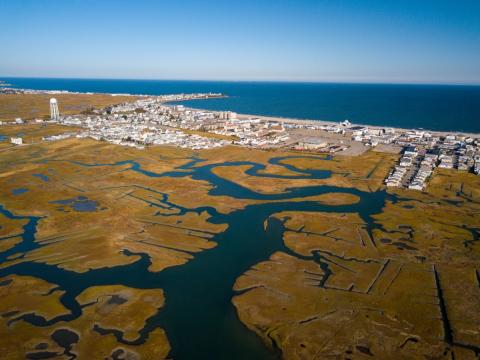
ROLE OF SEDIMENT OVERWASH IN BARRIER BEACH AND SALT MARSH CHANGE: UNDERSTANDING HOW COASTAL RESILIENCE IS TIED TO EXTREME EVENTS
Diane Foster (UNH School of Marine Science and Ocean Engineering)
During storms and extreme weather events along the coast, sand and other sediments can wash over a barrier, like a beach or a road, and end up in a salt marsh. This process, called overwash, plays an important role in bringing sediment and nutrients into the marsh. Healthy salt marshes act as nurseries for fish, habitat for other wildlife, and buffer storm surge. However, in the New Hampshire Seacoast, salt marshes are increasingly separated from their barrier beaches by manmade structures such as seawalls, roads, and neighborhoods. A team led by Diane Foster at the University of New Hampshire will investigate the role overwash plays in our salt marsh ecosystems and how manmade structures are altering the effects.
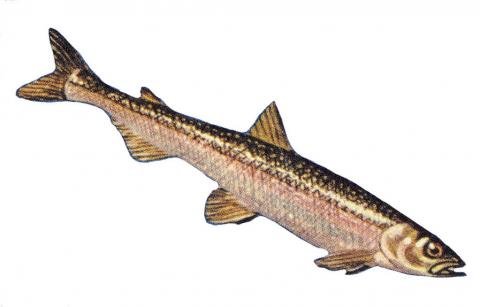
VALUE OF ESTUARIES TO RAINBOW SMELT IN NEW HAMPSHIRE
Nathan Furey (UNH Department of Biological Sciences)
Populations of rainbow smelt, a species important in ice fishing, have declined in New Hampshire and are listed as a Species of Concern by state and federal agencies. Estuaries are presumed to serve as important ecosystems for rainbow smelt because smelt travel between fresh and saltwater habitats, but the role of estuaries play in smelt populations is not well understood. Through experimental larval release, acoustic telemetry, and otolith microchemistry, a team of researchers led by Nathan Furey at the University of New Hampshire will explore how rainbow smelt use estuaries throughout their life cycle. Future managers of the stock will be able to use this research to better protect and enhance populations of rainbow smelt and revive a threatened ice fishery.
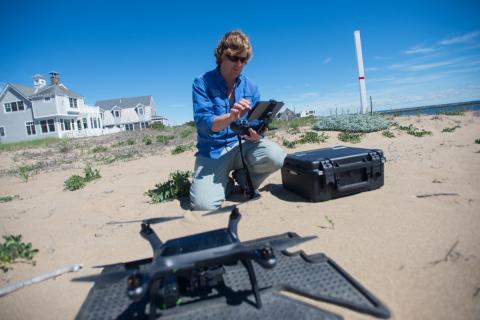
ASSESSMENT OF GEOSPATIAL AND TEMPORAL DRIVERS OF COASTAL FLOODING AND STORM SURGE AT A TIDAL MARSH IN HAMPTON, NH TO BUILD COMMUNITY RESILIENCE AND ENVIRONMENTAL LITERACY
Gregg Moore (UNH Department of Biological Sciences)
Understanding how sea level rise will affect coastal communities in New Hampshire is key to forming a plan to combat future risks to property and livelihoods of Seacoast residents. New research from a team led by Gregg Moore at the University of New Hampshire will combine data from UAV remote sensing technology with a wireless network of salinity and water level sensors to create a field monitoring system that can identify current and future flooding risks. Moore will also use the data from this system to engage students and volunteers, inform communities, and increase coastal resilience by holding local meetings and developing new coastal management strategies.
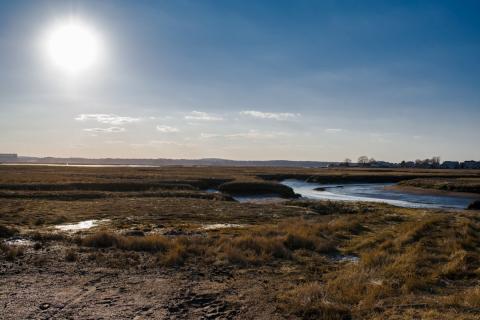
WASTEWATER TREATMENT PROCESSES INFLUENCING EMERGING CONTAMINANT LOADS TO THE GREAT BAY ESTUARY
Paula Mouser (UNH Department of Civil and Environmental Engineering)
Wastewater treatment plants remove many contaminants before water is released back into surface waters, like New Hampshire’s Great Bay. However, most treatment facilities are not designed to remove contaminants of emerging concern such as pharmaceuticals, personal care products, and perfluorinated alkyl substances (PFAS) – some of which can have sublethal toxic effects on aquatic life and people. To examine this growing threat, Paula Mouser and her team at the University of New Hampshire will apply new analysis tools to better understand how the operation of wastewater treatment facilities can influence the removal of these emerging contaminants. The team hopes to identify strategies that could reduce the amount of these compounds released from treatment facilities into tributaries of the Great Bay Estuary.
NH SEA GRANT FUNDED RESEARCH
To learn more about work that New Hampshire Sea Grant funds, explore our research projects. If you are a potential principal investigator based in New Hampshire, learn more about NHSG funding opportunities. For more information, contact NHSG’s Assistant Director for Research, Steve Jones.
